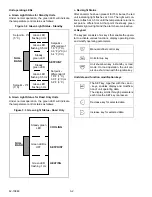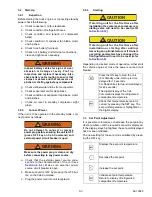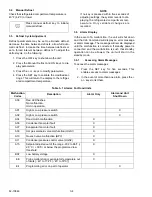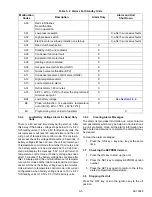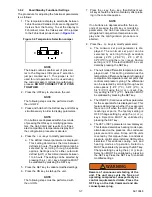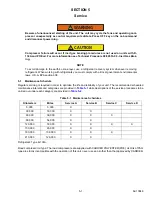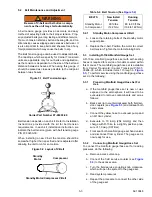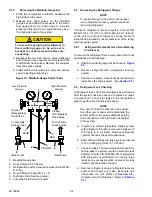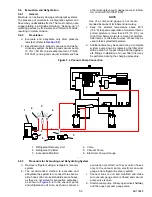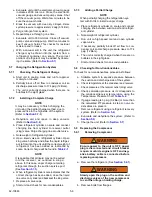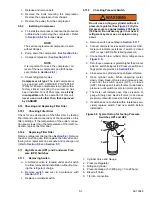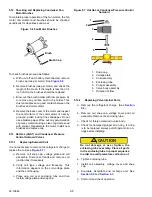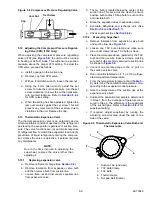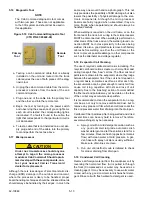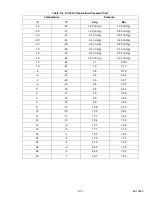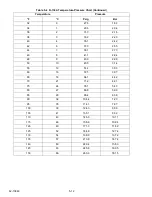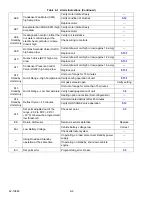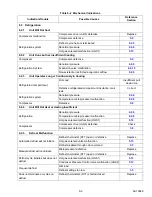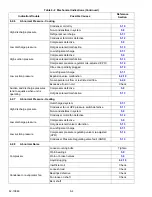
5-5
62-10848
5.6
Evacuation and Dehydration
5.6.1
General
Moisture can seriously damage refrigerant systems.
The presence of moisture in a refrigeration system can
have many undesirable effects. The most common are
copper plating, acid sludge formation, “freezing-up” of
metering devices by free water, and formation of acids,
resulting in metal corrosion.
5.6.2
Preparation
a. Evacuate and dehydrate only after pressure
leak test. (Refer to
)
b. Essential tools to properly evacuate and dehy-
drate any system include a good vacuum pump
(5 cfm = 8m#H volume displacement, P/N07-
00176-01) and a good vacuum indicator such as
a thermocouple vacuum gauge (vacuum indica-
tor). (Carrier P/N 0700414-00).
NOTE
Use of a compound gauge is not recom-
mended because of its inherent inaccuracy.
c. Keep the ambient temperature above 60°F
(15.6°C) to speed evaporation of moisture. If ambi-
ent temperature is lower than 60°F (15.6°C), ice
might form before moisture removal is complete.
Heat lamps or alternate sources of heat may be
used to raise system temperature.
d. Additional time may be saved during a complete
system pump down by replacing the filter drier
with a section of copper tubing and the appropri-
ate fittings. Installation of a new filter drier may
be performed during the charging procedure.
Figure 5.4 Vacuum Pump Connection
1. Refrigerant Recovery Unit
2. Refrigerant Cylinder
3. Evacuation Manifold
4. Valve
5. Vacuum Pump
6. Electronic Vacuum Gauge
- - - - -
5.6.3
Procedure for Evacuating and Dehydrating System
a. Remove refrigerant using a refrigerant recovery
system.
b. The recommended method to evacuate and
dehydrate the system is to connect three evacu-
ation hoses (Do not use standard service hoses,
as they are not suited for evacuation purposes.)
as shown in
to the vacuum pump
and refrigeration unit. Also, as shown, connect a
evacuation manifold, with evacuation hoses
only, to the vacuum pump, electronic vacuum
gauge, and refrigerant recovery system.
c. Connect lines to unit and manifold and make
sure vacuum gauge valve is closed and vacuum
pump valve is open.
d. Start vacuum pump. Slowly open valves halfway
and then open vacuum gauge valve.


